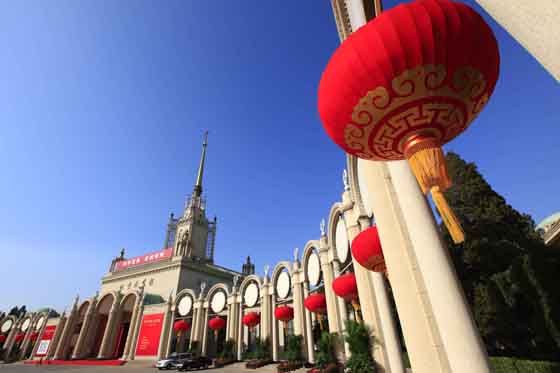
File photo: Agencies
BEIJING, Oct. 29 (Xinhua) -- Ms Mao's mind started wandering into the past when she saw a green-clad Jiefang truck displayed in the vast Beijing exhibition hall.
"When I graduated at the age of 21, I took a Jiefang truck from Nanchang, capital of east China's Jiangxi Province, to other cities in Jiangxi for job training," recalled Mao, who's in her 70s.
The only alternative transport at the time was walking, but the truck still took two days to travel about 100 km across the rugged mountain roads.
The Jiefang trucks, produced from 1956, were the first domestically-made motor vehicles after the People's Republic of China was founded in 1949.
The exhibition in Beijing, marking the 70th anniversary of the founding of New China, showcases many of China's scientific and technological breakthroughs.
Jiang Zhen, 38, has also seen spectacular advances in transport.
"When I went to college 20 years ago, I could only take a bus to Beijing from my hometown Dalian (northeast China's Liaoning Province), which took a whole night. But with the high-speed train, the journey is only four and a half hours," said Jiang.
China's rapid development of the domestic transport network now has railways and expressways extending to mountains, deserts and plateaus.
The Qinghai-Tibet Railway, the world's highest and longest plateau railway, was put into operation in 2006. During the construction, Chinese researchers and engineers overcame the challenges of permafrost, lack of oxygen and preserving the fragile ecology, achieving many technological breakthroughs.
By the end of 2018, China's railway network totaled 131,000 km, and high-speed rail exceeded 29,000 km.
Jiang took her 10-year-old son and parents to the exhibition. Her son, long accustomed to high-speed rail, showed more interest in the spacecraft.
"Dongfanghong-1," "Fengyun-1," "Shenzhou-1," "Chang'e-1"... A series of prototype models recorded China's aerospace history.
In 1970, the Dongfanghong-1 satellite was launched into orbit on the Long March-1 carrier rocket, making China the fifth country able to send a satellite into space independently.
In front of the re-entry capsule of Shenzhou-1, volunteer guide Yang Wantao, a major in energy and power engineering at Tsinghua University, was explaining the operation mechanism of the capsule.
China's first unmanned experimental spacecraft, Shenzhou-1 was launched in 1999.
"Visitors show great interest in its name and role. I tell them that it took crop seeds like green pepper, watermelon and tomato into space, and verified the key technology and system design of the spacecraft," Yang said.
"The exhibition is of great significance, especially for us who were born after 1990. It teaches us about China's development that we couldn't personally experience," said Yang.


